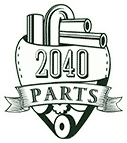30" Gm Hot Rod Chrome Tilt Manual Steering Column No Key & Adapter on 2040-parts.com
Atlanta, Georgia, US
Exhaust Headers for Sale
 New ceramic coated 1966-1987 chevy truck long tube headers 305 350 c/k 1500(US $179.99)
New ceramic coated 1966-1987 chevy truck long tube headers 305 350 c/k 1500(US $179.99) 1964-1974 bbc big block chevy car black coated long tube headers(US $159.99)
1964-1974 bbc big block chevy car black coated long tube headers(US $159.99) New sbc 1988-1995 truck headers chrome heavy duty 350 c/k 1500 pickup(US $96.99)
New sbc 1988-1995 truck headers chrome heavy duty 350 c/k 1500 pickup(US $96.99) Sbc chevy 88-95 truck headers black coated heavy duty 350 c/k 1500 pickup(US $89.99)
Sbc chevy 88-95 truck headers black coated heavy duty 350 c/k 1500 pickup(US $89.99) Sbc stainless steel 1955-1957 chevy headers 265 283 302 305 327 350 383 400 (US $125.99)
Sbc stainless steel 1955-1957 chevy headers 265 283 302 305 327 350 383 400 (US $125.99) Bbc camaro chevelle ceramic coated shorty headers steel chevy 396 402 427 454 (US $161.99)
Bbc camaro chevelle ceramic coated shorty headers steel chevy 396 402 427 454 (US $161.99)
2015 Audi TT, TTS Coupe and Roadster revealed
Mon, 24 Mar 2014The 2015 Audi TT and TTS Coupe and Roadster models debuted on Friday with a new optional competition package, optional carbon package and new standard features. Power will continue to come from two variations the company’s high-strung 2.0-liter TFSI turbocharged and direct injected engine. The TT RS will no longer be offered.
Second annual ENG Automotive Design Summit held in Rome
Wed, 09 Jun 2004European Networking Group (ENG) held their second annual Automotive Design Summit May 12-13. To follow on from the success of last years event in Barcelona, the event was held in the stylish Es Hotel in Rome, Italy. The event featured workshops sessions and business case studies from some of the most renowned designers in the industry, seeking to bring both knowledge and inspiration to the participants over the two day event.
Worth a read: Wired's 'Why Getting It Wrong Is the Future of Design'
Thu, 25 Sep 2014Wired has just published a series of short articles entitled 13 Lessons for Design's New Golden Age. While there are some interesting examples cited in the piece, the concluding article, ‘Why Getting It Wrong Is the Future of Design' by the former creative director of Wired magazine, Scott Dadich, feels like it has particular resonance for car design. Dadich's Wrong Theory uses disruptive examples from the world of art, plus his own experience of working at Wired, to explain how design goes through phases: establishing a direction, creating a set of rules that define that direction and finally someone who dares to break from that direction.


